Today’s
Greyhound
Retail
Park
took
its
name
from
its
previous
use
as
the
towns
Greyhound
Stadium.
The
stadium
was
originally
built
on
the
site
of
the
former
Milton
Hall
Brickworks,
the
site
was
purchased
by
the
Greycing
Company
headed
by
Mr
W.
J.
Cearns.
A
planning
application
to
construct
a
Greyhound
Racing
Stadium
was
submitted
to
Southend
Council
in
1932.
Upon
granting
of
permission
a
shares
issue
scheme
was
launched,
it
was
massively
oversubscribed,
work
on
developing
the
track
and
stadium
began
soon
after.
When
completed
the
stadium
had
the
western
stand
“Sutton
Stand”
which
had
2000
covered
tip
up
seats,
the
rest
of
the
stadium
had
uncovered
terracing.
The
first
race
was
held
on
Easter
Saturday
15th
April
1933,
the
new
track
could
host
races
from
300
yards
up
to
750
yards,
the
dogs
had
the
privilege
of
having
the
latest
state
of
the
air
hare,
and
the
track
was
soon
named
as
one
the
fastest
in
the
country.
In
the
early
1930s
the
Kursaal
based
Southend
United
Football
Club
saw
the
MD
of
the
greyhound
track
elected
to
the
board,
with
just
two
years
left
on
the
lease
at
the
Kursaal
discussions
about
where
the
team
would
play
in
future
years
began.
The
board
of
directors
voted
to
re-
locate
the
club
to
the
new
Southend
Stadium,
and
made
a
request
to
the
Football
Association
for
them
to
authorise
the
relocation
to
the
multi-use
stadium.
The
FA
had
never
been
happy
with
football
being
staged
at
multi-use
stadia
but
surprisingly
to
everyone,
on
4th
June
1934
the
FA
gave
the Blues permission to relocate.
The
Granger
Road
site
was
airy
and
spacious,
the
playing
ground
in
the
centre
of
the
track
had
never
been
designed
or
laid
for
football,
spectators
were
set
back
from
the
action
by
the
wide
dog
track,
this
meant
fans
further
back
would
have
to
squint
and
strain
their
eyes
to
see
the
action
which
did
not
prove
popular,
the
dog
track
saw
the
end
of
the
close
tight
to
the
pitch
noisy
environment
of
the
previous
Kursaal
ground.
The
ground
had
three
entrances
one
in
Granger Road, Maldon Road and Sutton Road.
The
new
lease
initially
gave
SUFC
a
seven
year
lease
on
the
site,
but
this
was
later
extended
to
21
years.
The
playing
surface
was
clay
based
with
a
north-south
pitch
of
112
yards
x
72
yards.
The
pitch
was
ready
in
time
for
the
kick
off
of
the
1934/35
season,
with
the
first
game
on
25th
August
1934,
it
was
witnessed
by
over
8000
spectators
to
see
the
Southend
United
Reserves
vs
Tottenham
Hotspurs Reserves, Southend lost the match 2—6.
The
first
game
played
by
the
first
team
was
on
29th
August
1934,
when
7456
spectators
witnessed
the
visit
of
Aldershot,
Southend
ran
out
2—1
victors,
the
largest
attendance
in
the
opening
season
came
on
1st
September
1934
with
the
arrival
of
Exeter
City
when
11,389
saw
the
away
team
take
the
spoils
1—2.
The
pitch
was
re-laid
during
the
latter
stages
of
1934
but
the
clay
base
proved
to
be
a
problem.
The
record
crowed
for
a
Southend
United
home
game
was
achieved
at
the
greyhound
stadium
on
15th
January
1936,
when
some
24,000
supporters
packed
the
stadium
to
bursting
point
for
the
FA
Cup
replay
against
Tottenham
Hotspurs
in
1936,
(Southend
lost 2-1) there was a further 2000 fans locked out of the stadium.
The
stadium
hosted
dog
racing
twice
during
weekdays
and
on
Saturday
evenings,
it
also
played
host
to
occasional
boxing
matches,
amateur
football
and
other
sports.
However,
when
the
dark
clouds
of
war
were
beginning
to
spread
over
the
horizon,
soon
the
stadium
would
soon
see
a
new
tenant.
The
1939/40
season
had
been
abandoned
with
all
the
teams
being
allocated
into
“regional”
competitions,
Southend
had
been
up
into
South
Section
Group
A
alongside
some
of
the
big
London
clubs,
however,
with
many
players
away
on
National
Service
duty
the
FA
implemented
a
guest
player/s
rule
where
teams
could
borrow
players
from
other
teams
to
fill
the
required
number
of
players
and
substitutes.
The
competition
ended
in
January
1940
with
Southend
ending
up
bottom
team.
Greyhound Stadium

A
second
competition
was
arranged
in
February
1940,
Southend
were
placed
into
Group
D.
In
August
1940
the
Army
Officer
Training
Corps
put
in
a
requisition
order
taking
control
of
the
stadium
and
all
its
facilities.
The
Blues
were
homeless,
a
deal
was
struck
to
rent
on
a
game
by
game
basis
at
Chelmsford
United’s
New
Writtle
Street,
however,
very
poor
attendance
figures
saw
Southend
United
deciding
to
stop
operating
so
that
players
could
concentrate
on
their
war
duties.
Despite
the
fact
that
professional
football
had
more
or
less
ended
during
the
war
games
were
still
being
played
at
the
Southend
Stadium.
With
all
three
services
being
based
in
Southend
inter-service
matches,
these
were
arranged
as
were
charity
games.
One
notable
game
was
played
between
the
Army and Royal Navy, lining up for the Shoeburyness Garrison was Arsenal star Alex James the Army won the game 5—2.
Southend
United
returned
from
their
sabbatical
in
May
1945,
but
upon
returning
to
the
stadium
it
was
found
the
pitch
needed
completely
relaying
and
major
repairs
were
needed
to
the
stadium,
but
worse
of
all,
all
the
clubs
records
from
before
the
war
had
been
destroyed
by
the
Army.
In
June
1945
the
stadium
played
host
to
the
Southend
war
victory
military
tattoo.
The
first
senior
match
played
at
the
stadium
after
the
war
was
against
Queens
Park
Rangers,
the
away
team
won
2—1.
Greyhound
racing
did
not
return
to
the
stadium
until
April
1946,
the
midweek
dog
races
were
scheduled
for
Wednesday
evenings
the
same
time
Southend
United played their midweek home games, this saw the blues swap to either a Tuesday or Thursday evening game.
The
popularity
of
dog
racing
saw
the
stadium
regularly
attracting
crowds
in
excess
of
5000,
despite
the
protests
of
Southend
United
to
the
owners
over
the
Wednesday
evening
races
the
dogs
took
primacy,
as
the
tenancy
agreement
both
groups
had
signed
stipulated
that
the
dog
races
must
take
preference
over
any
other
event
held
at
the
stadium.
At
the
start
of
the
1948/49
season
the
club
began
to
review
the
lease
on
the
stadium
as
the
lease
they
held
was
due
to
expire
in
1955.
The
fans
had
held
a
deep
desire
to
return
to
their
spiritual home of Roots Hall in Victoria Avenue, it was decided that the club would indeed relocate to a specially built stadium.
The
last
season
Southend
United
played
at
the
Greyhound
Stadium
was
the
1954/55
season,
with
the
last
game
played
by
the
first
team
on
30th
April
1955
when
Southend
United
beat
visitors
Brentford
3—2.
Local
football
continued
to
be
played
at
the
Greyhound
Stadium,
with
local
teams
playing
big
matches
at
the
ground
as
well
as
Southend
United’s
reserve
and
youth
teams
playing
home
games there during the 1960s & 1970s.
In
August
1970
BBC
TV
arrived
to
film
the
first
the
first
round
of
the
BBC
Trophy.
Then
in
September
1970
the
operators
applied
to
Southend
Council
to
host
Motorbike
Speedway
&
Stockcar
Racing
at
the
stadium
on
a
new
track
to
be
laid
within
the
stadium.
The
proposals
were
refused
by
the
council
in
March
1971
on
noise
grounds,
despite
the
fact
that
the
original
planning
application
had
included
Speedway as a permitted sport when the stadium was first built.
Senior
football
was
to
return
to
the
Greyhound
Stadium
in
1971
when
the
local
amateur
side
Pegasus
Athletic
joined
the
Essex
Senior
League,
they
rented
the
stadium
on
a
game
by
game
basis
for
the
1971/72
season,
however,
a
dispute
saw
the
team thrown out of the stadium, with no home the club folded.
The Stadium seen from the Civic centre not long before its demolition (With thanks to Maurice for the photo©).
The
general
decline
in
popularity
of
greyhound
racing,
the
stadium
fell
into
decline,
with
attendance
figures
rarely
climbing
over
the
400
mark.
Profits
were
drastically
down
with
127
meetings
a
year,
lasting
eight
hours
a
week
there
was
barely
enough
money
coming
in to cover the wages of the 21 full time staff.
Southend
Council
supported
the
stadium
by
hiring
it
out
once
a
year
to
host
its
annual
Firework
Spectacular,
however,
it
was
not
prepared
to
buy
the
stadium
or
set
up
a
rescue
package.
Eventually
the
stadium
became
unviable
and
the
announcement
was
made
that
it
was
to
close.
The
last
race
was
held
at
the
stadium
on
Boxing
Day
1985,
the stadium only lasted two months before it was demolished.
The
site
was
rapidly
re-developed
into
a
retail
park,
this
has
seen
a
number
of
changes
to its tenants over the years.
Some of the stores that have located to the retail park:
Unit 1
Do It All—Matalan
Unit 2
Currys—What Everyone Wants—Paul Simon (closed mid 2012)
Unit 3 (a) *unit subdivided
?—Kwick Save—Safeway—Farmfoods*
Unit 3 (b) *unit subdivided
?—Kwick Save—Lidl*
Unit 4
Rumbelows—£ Stretcher—in Store—£ Stretcher Extra
Unit 5
Courts—Mecca Bingo
Unit 6
Bottoms Up—Wine Rack—Choices Video—empty
Unit 7 (New build 2012)
KFC Drive Thru
Another store that traded from the retail park (but I can't remember what units) was:
The Sleep Depot (administration 2008)
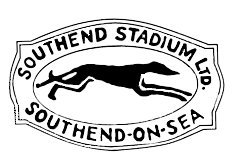
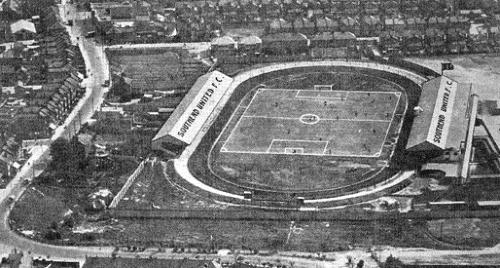
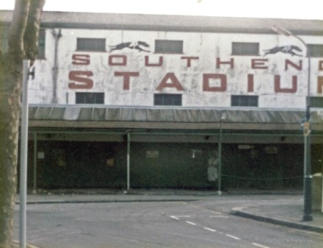
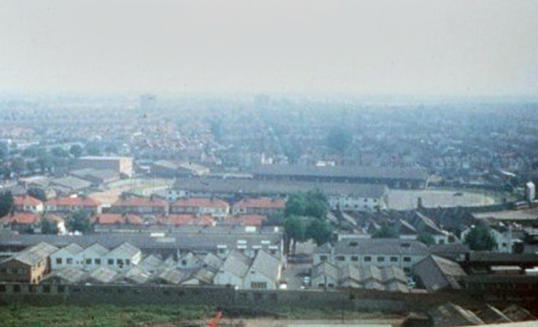
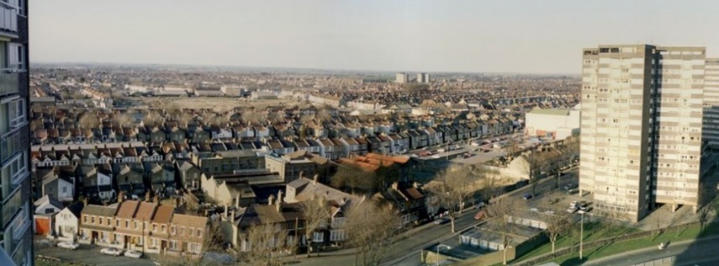
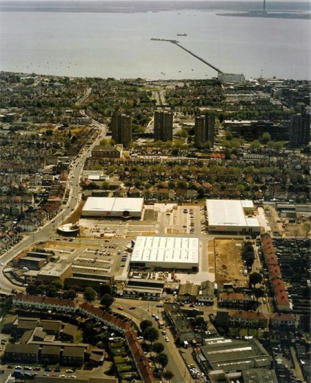
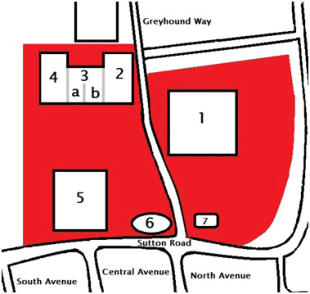
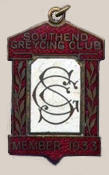
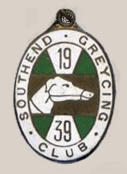
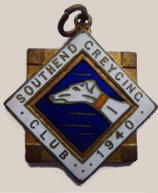
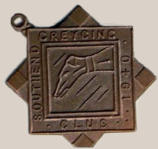
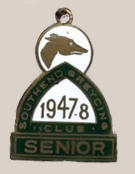
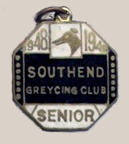
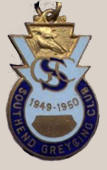

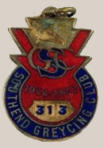
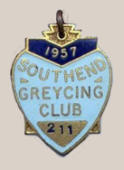

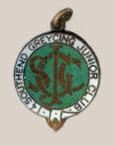
Photo of the demolished stadium, which can be seen to the centre. Kind permission of Dave Bullock ©.
The
photo
above
shows
the
retail
park
a
few
years
after
it
was
completed,
the
road
running
towards
the
seafront
is
Sutton
Road,
the
retail
unit
closest
to the camera is unit 1
The
area
shown
in
red
roughly
shows
the
area
of
the
stadium,
Greyhound
Way
now
runs
through
the
middle
of
the
site,
Granger
Road
is
another
name that continues the legacy of the stadium
The following images are courtesy of John Slusar at http://www.greyhoundderby.com/
They
show
badges
produced
by
the
track,
an
amazing
collection
and
our
thanks
to
John
for
kindly
letting
us
use
the
photos.
John's
website charts the history of Greyhound racing tracks in the United Kingdom and the badges issued by each course.
Southend-on-Sea
Southend Timeline Southend-on-Sea © 2009 - 2024. All Rights Reserved



Southend-on-Sea’s No 1 History Website! Documenting The Town & The Townspeople
Now Incorporating The Sea Of Change Website
Website Info:



SOUTHEND CITY
Chalkwell ▪ Eastwood ▪ Leigh-on-Sea ▪ Prittlewell ▪ Shoeburyness ▪ Southchurch ▪ Thorpe Bay ▪ Westcliff-on-Sea
































































